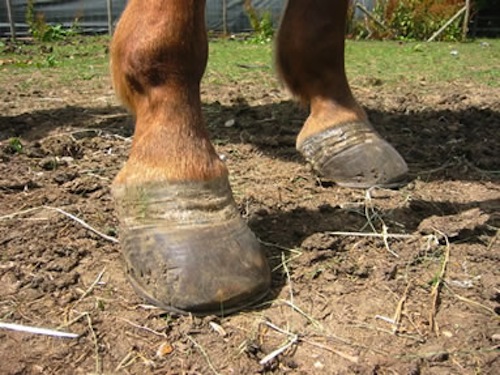Dr Nicola Menzies-Gow of the Royal Veterinary College has been awarded a grant of £42,000 (approximately $65,000US) by Great Britain's Animal Welfare Foundation to work on a study: "Markers of equine laminitis predisposition: Searching for potential future diagnostic test". The award was announced this week by the college.
Dr Menzies-Gow explains what she is aiming to achieve by attempting to develop a diagnostic test:
| Nicola Menzies-Gow |
"Taking its UK prevalence as 3% means that approximately 8000 ponies and horses suffer an acute attack for the first time each year. Many of these become chronically debilitated and prone to recurrent attacks, thus joining the UK herd of approximately 16,000 chronically affected animals.
"Certain individual animals appear predisposed to recurrent pasture-associated laminitis. However, there are no diagnostic tests that identify at-risk animals before the disease occurs or when their history is unknown. Developing such a test would allow the preventative management countermeasures to be appropriately targeted.
"Blood samples have been collected prospectively from 446 ponies with no previous laminitis and these ponies are currently being followed to see which go on to experience laminitis in the future. By measuring a number of potential markers in their blood and then comparing the values between those ponies that develop future laminitis and those that do not, it may be possible to develop a diagnostic test for laminitis predisposition.
"When applied to the horse population as a whole, this may significantly reduce the frequency of, or even completely prevent, episodes of laminitis in predisposed animals through implementation of preventative measures, thus significantly improving their welfare."
© Fran Jurga and Hoofcare Publishing; Fran Jurga's Hoof Blog is a between-issues news service for subscribers to Hoofcare and Lameness Journal. Please, no use without permission. You only need to ask. This blog may be read online at the blog page, checked via RSS feed, or received via a digest-type email (requires signup in box at top right of blog page). To subscribe to Hoofcare and Lameness (the journal), please visit the main site, www.hoofcare.com, where many educational products and media related to equine lameness and hoof science can be found. Questions or problems with this blog? Send email to blog@hoofcare.com.
Follow Hoofcare + Lameness on Twitter: @HoofcareJournal
Read this blog's headlines on the Hoofcare + Lameness Facebook Page
Disclosure of Material Connection: The Hoof Blog (Hoofcare Publishing) has not received any direct compensation for writing this post. Hoofcare Publishing has no material connection to the brands, products, or services mentioned, other than products and services of Hoofcare Publishing. I am disclosing this in accordance with the Federal Trade Commission’s 16 CFR, Part 255: Guides Concerning the Use of Endorsements and Testimonials in Advertising.



